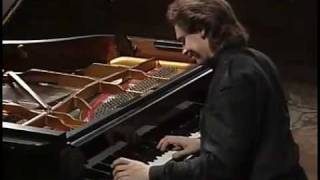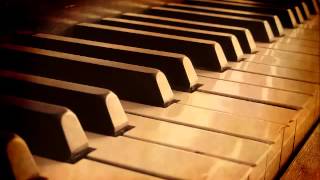Friday, 19 December, 2025г.
















Где искать: по сайтам Запорожской области, статьи, видео ролики
пример: покупка автомобиля в Запорожье
Chopin: Sonata No.2 in B-flat minor, Op.35 (Pogorelich, Fialkowska)
By far and away darkest sonata of the Romantic period. Schumann famously wrote of the Op.35, in an opinion still widely cited, that “The idea of calling it a sonata is a caprice, if not a jest, for he has simply bound together four of his most reckless children, thus under his name smuggling them into a place into which they could not else have penetrated.” Even if true, this criticism is kind of meaningless, punishing Chopin for failing to achieve something he was never really aiming at. Chopin was using the Sonata as a framework within which he drew together some of the major conceptions that featured in his earlier work: a dark ballade/fantasy, a scherzo, a funeral march, and a prelude/etude, with a nocturne embedded in all of the first three movements. Consider the amazing final movement: understated, disintegrative, bordering on atonality, without harmony, without melody, without decoration, without inflection, without pause. It follows on naturally from the funeral march, a kind of grim impressionist reflection on morbidity. The scherzo is a kind of biting, titanic struggle against death, and the opening movement, with its shuddering (and harmonically misleading) introduction, clamorous repeated chords, jagged figurations, and inverted reprise, is also a Hadean meditation of a more explicitly epic kind.
But it’s also important to notice that, contrary to Schumann (and almost every commentator since), this Sonata *is* motivically bound together in ingenious ways. The most obvious motif is that of the repeating note (2:18, and all through the Scherzo + March). But there are many more subtle motivic linkages: most cleverly, the introduction’s Db-Db-C becomes the theme at 2:06, which then becomes the LH’s Eb-Db oscillation between the 5th/6th notes of the scale degree at 7:06, and which then recurs in the F-Gb in the March’s LH). Note also that the opening downwards leap reasserts itself spectacularly in the development at 3:23 in the lowest voice (and elsewhere).
MVT I, Grave—Doppio movimento
00:00 – INTRODUCTION. [A] = opening Db-E leap, [B] = maj 6th + min 2nd movement, [C] = C#-Db-C descent in upper voice
EXPOSITION
00:17 – Theme 1. [D] = the minor 3rd (Bb-Db) interval, here in the form of a Db/Bb/C/Db/Bb rotating cell in the RH, that later shifts to C-Eb
00:47 – Transition
00:55 – Theme 2. Note the use of [D] – the opening phrase and its variants stay between F and Ab
02:06 – Theme 3, derived from [C]. At 2:18, [E] = repeated notes
DEVELOPMENT
02:30 – Var.1. [C] developed jaggedly, with [A] interspersed (in retrograde) at 2:35 (A#-B-D) and similar. At 2:40 the descending 5th derived from [A], and also outlines the interval crucial to the second phrase of Theme 2. At 2:56 [A] is used sequentially
03:00 – Upper voice is variation on Theme 2, while LH plays [D]
03:05 – Var.2. Theme 1’s second phrase is developed, followed by the variation on Theme 2
03:23 – Var.3. [A] thundering in the lowest voice (Bb-D, etc), [D] in RH
03:44 – Var.4. [D] rising.
03:53 – Transition into
RECAPITULATION
04:05 – Theme 2
05:16 – Theme 3
05:35 – CODA
MVT II, Scherzo
05:58 – Scherzo. Note motif [E] (repeated notes) both in the opening and at 6:36. At 6:08 Theme 3 from Mvt 1 is recalled.
07:06 – Trio. The LH’s Eb-Db swing is a modified [C]. Call this [C*]. The melody in the upper voice borrows the contour of Mvt 1’s Theme 2, and is also a very neat augmentation of the rapid octave figure at 6:27(!), with the last note displaced up an octave
10:27 – Scherzo da capo
11:32 – A surprising coda that uses material from the Trio, giving the movement an ABAB* structure.
MVT III, Marche funèbre: Lento
12:25 – March, combining three motifs at once. The accompaniment uses [C*]: like the 2nd Mvt Trio’s LH, it alternates between the 5th and 6th notes of the scale degree (Eb/Db in the Trio, F/Gb here). The RH employs [E] (repeated notes in upper voice), which eventually turn into [D] at 12:36, outlining the minor 3rd. Note that the bass trills in this section are also anticipated by similar trills in the Trio.
14:41 – Nocturne
16:41 – March
MVT IV, Finale: Presto
It is not really *that* sensible to talk about the structure of this movement. It has one (bithematic rondo or ABCDAB+Coda) but it isn’t relevant to how you actually hear this movement. Nonetheless for completeness here it is:
18:57 – Theme 1, prominently integrating [D] – look at the two highest notes in the opening bar. As with Mvt 1’s Theme 1, the Bb-Db interval in the first two bars becomes C-Eb
19:04 – Episode 1
19:21 – Theme 2
19:29 – Episode 2
19:37 – Theme 1
19:42 – Episode 1
20:06 – Coda
Теги:
Chopin Funeral March Op.35 Funeral March Sonata Fialkowska Pogorelich Scherzo Finale Piano Keyboard Performance Virtuoso Difficult Best Score Sheet Music Scrolling Classical Music Classical Music Romantic Nocturne Sonata No.2 Sonata No.2 in Bb Minor Sonata No.2 in B-flat minor B-flat Minor
Похожие видео
Мой аккаунт


 У вашего броузера проблема в совместимости с HTML5
У вашего броузера проблема в совместимости с HTML5


